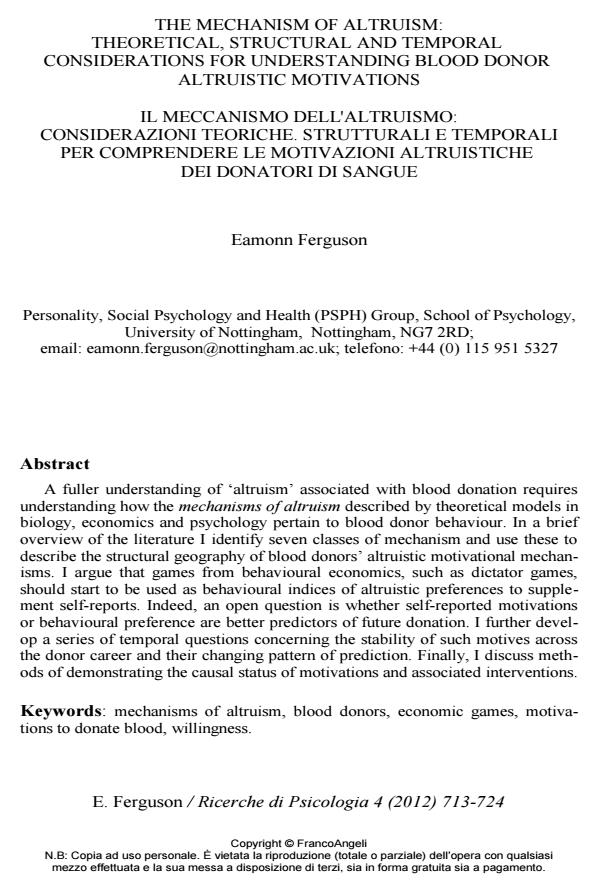The mechanism of altruism: theoretical, structural and temporal considerations for understanding blood donor altruistic motivations il meccanismo dell'altruismo:
Titolo Rivista RICERCHE DI PSICOLOGIA
Autori/Curatori Eamonn Ferguson
Anno di pubblicazione 2013 Fascicolo 2012/4
Lingua Italiano Numero pagine 12 P. 713-724 Dimensione file 195 KB
DOI 10.3280/RIP2012-004009
Il DOI è il codice a barre della proprietà intellettuale: per saperne di più
clicca qui
Qui sotto puoi vedere in anteprima la prima pagina di questo articolo.
Se questo articolo ti interessa, lo puoi acquistare (e scaricare in formato pdf) seguendo le facili indicazioni per acquistare il download credit. Acquista Download Credits per scaricare questo Articolo in formato PDF

FrancoAngeli è membro della Publishers International Linking Association, Inc (PILA)associazione indipendente e non profit per facilitare (attraverso i servizi tecnologici implementati da CrossRef.org) l’accesso degli studiosi ai contenuti digitali nelle pubblicazioni professionali e scientifiche
A fuller understanding of ‘altruism’ associated with blood donation requires understanding how the mechanisms of altruism described by theoretical models in biology, economics and psychology pertain to blood donor behaviour. In a brief overview of the literature I identify seven classes of mechanism and use these to describe the structural geography of blood donors’ altruistic motivational mechanisms. I argue that games from behavioural economics, such as dictator games, should start to be used as behavioural indices of altruistic preferences to supplement self-reports. Indeed, an open question is whether self-reported motivations or behavioural preference are better predictors of future donation. I further develop a series of temporal questions concerning the stability of such motives across the donor career and their changing pattern of prediction. Finally, I discuss methods of demonstrating the causal status of motivations and associated interventions.
Parole chiave:Donatori di sangue, giochi economici, predittivita del comportamento, motivazioni.
Eamonn Ferguson, The mechanism of altruism: theoretical, structural and temporal considerations for understanding blood donor altruistic motivations il meccanismo dell'altruismo: in "RICERCHE DI PSICOLOGIA " 4/2012, pp 713-724, DOI: 10.3280/RIP2012-004009